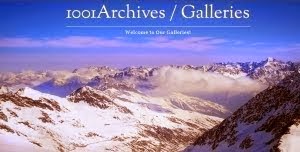This edition of COSMIC JOURNEYS explores the still unfolding story of Earth's past and the light it sheds on the science of climate change today. While that story can tell us about the mechanisms that can shape our climate. it's still the unique conditions of our time that will determine sea levels, ice coverage, and temperatures.
But there are signs that Earth's great stores of ice are beginning to melt. To find out where Earth might be headed, scientists are drilling down into the ice, and scouring ancient sea beds, for evidence of past climate change. What are they learning about the fate of our planet... a thousand years into the future and even beyond?
30,000 years ago, Earth began a relentless descent into winter. Glaciers pushed into what were temperate zones. Ice spread beyond polar seas. New layers of ice accumulated on the vast frozen plateau of Greenland. At three kilometers thick, Greenland's ice sheet is a monumental formation built over successive ice ages and millions of years. It's so heavy that it has pushed much of the island down below sea level. And yet, today, scientists have begun to wonder how resilient this ice sheet really is.
Average global temperatures have risen about one degree Celsius since the industrial revolution. They could go up another degree by the end of this century. If Greenland's ice sheet were to melt, sea levels would rise by over seven meters. That would destroy or threaten the homes and livelihoods of up to a quarter of the world's population.
With so much at stake, scientists are monitoring Earth's frozen zones... with satellites, radar flights, and expeditions to drill deep into ice sheets. And they are reconstructing past climates, looking for clues to where Earth might now be headed... not just centuries, but thousands of years in the future.
Periods of melting and freezing, it turns out, are central events in our planet's history.
That's been born out by evidence ranging from geological traces of past sea levels... the distribution of fossils... chemical traces that correspond to ocean temperatures, and more.
Going back over two billion years, earth has experienced five major glacial or ice ages. The first, called the Huronian, has been linked to the rise of photosynthesis in primitive organisms. They began to take in carbon dioxide, an important greenhouse gas. That decreased the amount of solar energy trapped by the atmosphere, sending Earth into a deep freeze.
The second major ice age began 580 million years ago. It was so severe, it's often referred to as "snowball earth." The Andean-Saharan and the Karoo ice ages began 460 and 360 million years ago. Finally, there's the Quaternary... from 2.6 million years ago to the present. Periods of cooling and warming have been spurred by a range of interlocking factors: the movement of continents, patterns of ocean circulation, volcanic events, the evolution of plants and animals.
The world as we know it was beginning to take shape in the period from 90 to 50 million years ago. The continents were moving toward their present positions. The Americas separated from Europe and Africa. India headed toward a merger with Asia. The world was getting warmer. Temperatures spiked roughly 55 million years ago, going up about 5 degrees Celsius in just a few thousand years. CO2 levels rose to about 1000 parts per million compared to 280 in pre-industrial times, and 390 today.
But the stage was set for a major cool down. The configuration of landmasses had cut the Arctic off from the wider oceans. That allowed a layer of fresh water to settle over it, and a sea plant called Azolla to spread widely. In a year, it can soak up as much as 6 tons of CO2 per acre. Plowing into Asia, the Indian subcontinent caused the mighty Himalayan Mountains to rise up. In a process called weathering, rainfall interacting with exposed rock began to draw more CO2 from the atmosphere... washing it into the sea. Temperatures steadily dropped.
By around 33 million years ago, South America had separated from Antarctica. Currents swirling around the continent isolated it from warm waters to the north. An ice sheet formed. In time, with temperatures and CO2 levels continuing to fall, the door was open for a more subtle climate driver. It was first described by the 19th century Serbian scientist, Milutin Milankovic.
He saw that periodic variations in Earth's rotational motion altered the amount of solar radiation striking the poles. In combination, every 100,000 years or so, these variations have sent earth into a period of cool temperatures and spreading ice.



.jpg)







.jpg)












You may be qualified for a new government sponsored solar rebate program.
ReplyDeleteClick here to find out if you are qualified now!